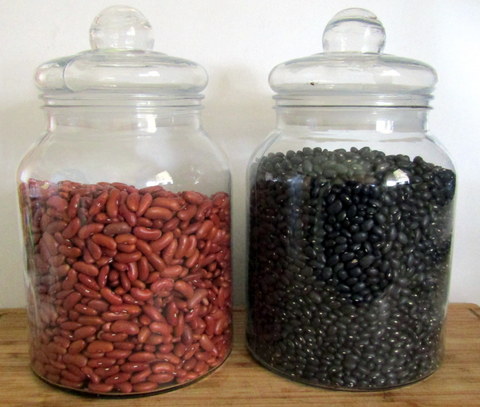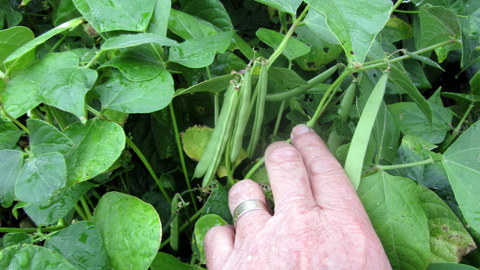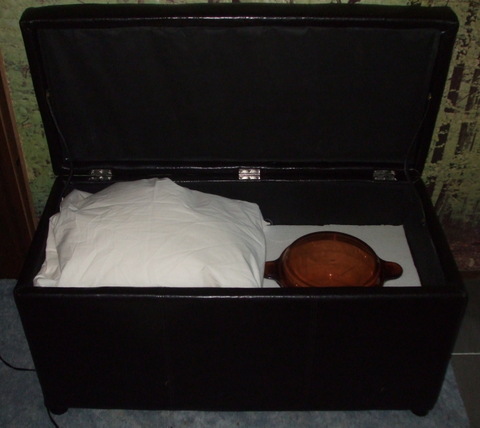With our moving towards a more plant based diet, we needed to find a vegetarian protein source that was available cheaply, which we might be able to produce ourselves and which we could include in our diets easily but which we found palatable. Dried beans have been the perfect answer. There are quite a variety out there and we have tried many different types but we still come back to our favourites: red kidney beans and black beans.
Buying and Storing
There are two main options for buying dried beans –
1. Canned - this is the easy solution, they are precooked and ready to go so you don’t need any special planning, just open, dump, cook and away you go! Also, being canned, they will store for a long time, 3 to 5 years if stored in a cool dry place, although they will remain safe to eat for longer than that but there will be some decrease in nutrition. Some varieties of canned organic beans are also available.
There is the odd disadvantage, they obviously have steel packaging which needs to be recycled, for every 400gram can of beans you buy only 240 grams of that is actually beans, the rest is water. Also the variety of tinned beans out there is not as great as the variety of dried beans actually available.
2. As is – Dried beans need quite often to be soaked, and definitely cooked before use so some planning and aforethought is required when including them in your menu, but they do have some definite advantages. Some varieties can be bought packaging free from bulk supply shops, a wider range is available and they are generally cheaper to buy in this form. Recently I bought a kilo of dried red kidney beans for $6.99, this translates to roughly 3 kg of soaked cooked beans or in cost terms 23c per 100gms of cooked beans. A can of cooked beans containing 240gms of beans for $1.50 per can (at our local Colesworth) equates to 63c per 100 grams of beans, so not quite 3 times the cost of the dried ones.
The one drawback of dried beans, strangely enough, is in the storage. I assumed years ago that dried beans will last forever, and so they will, but don’t try cooking them after the first year or two, they will be like bullets! For some reason they don’t rehydrate when soaked, even for an extended time, and don’t go soft when cooked. The obvious answer is to only store a maximum of a years’ worth at any one time.
Growing
It is entirely possible to grow some of your own dried beans at home. Some seed companies will have stock, but you can also use the dried beans you buy from the food shop to consume to plant as well, assuming you haven’t stored them for an overly long period of time. To the purists, yes they are probably not organic and have been originally grown overseas but the system does work and we do get home-grown dried beans.
I have grown both of our staples – red kidney and black beans – in our back yard in 2m x 1.2m or 3m x 1.2m veggie patches. I generally get a five-to-one ratio in return ie for 100gm sown, I harvest 500gm or a bit more. They both appear to be climbing beans but of the two, the red kidney are more vigorous and take longer to harvest, I can fit in two harvests of black beans in our growing season here in Sydney.
There is also another advantage to growing your own. Due to the fact that they are legumes, they fix nitrogen in the soil, raising its fertility. When I harvest, I cut the plants off at ground level and leave the roots, including the nitrogen fixing nodules, in the ground to rot down and release the nitrogen they hold, enriching the soil. So not only do you get a high protein feed, you get free fertiliser as well! If you want more detail on how we grow our dried beans, see here.
Cooking
A lot of beans need to be soaked, then fully cooked before adding to dishes for consumption. We do ours by soaking them overnight in lots of water, then changing the water next morning and boiling them up for 5 to 10 minutes. You do have to keep an eye on them and turn down the heat once the start to boil, they can foam up everywhere!
Once they have boiled for the requisite time I place them in our stored heat cooker, so that they don’t need any extra heat input. They stay in there for 3 to 4 hours then I pull them out, drain them and let them cool. Depending on the time of year, I will put them in the fridge to cool during warmer times. Once the beans are cooled, I pack them into containers at about 250gms per container (the ‘one can’ size is quite versatile) and then place them in the freezer.
With the beans then ready to be tossed into dishes at a moment’s notice you are set to go. They are remarkably versatile, adding flavour and protein to all sorts of dishes. Some of them, like beans and rice or homemade burritos are pretty obvious, and we make a pretty tasty bean and veggies soup, but some others have been less obvious to us until we tried them. Adding beans to Linda’s veggie curry, my world famous veggie patties and even our fried rice has ratcheted the flavour and nutrition up quite a bit.
So when you are cooking your usual dishes at home and want to ramp things up, ask your family: “You want beans with that?”






